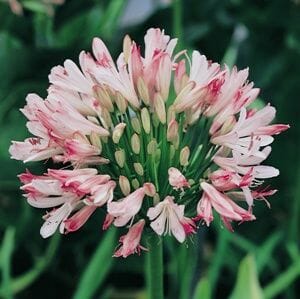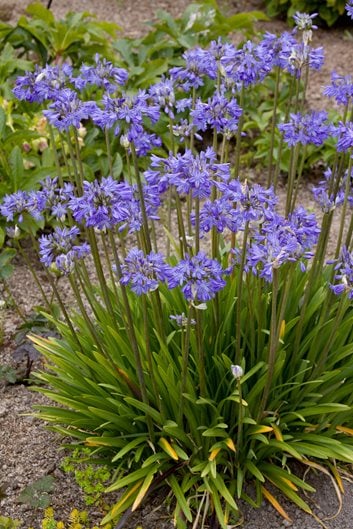Unleashing the Secret to Effective Agapanthus Cultivation: Idea for a Flourishing Garden
In the world of gardening, growing agapanthus effectively requires a critical strategy that includes various elements of plant care. With mindful attention to information, one can unlock the tricks to nurturing these magnificent flowers, leading to a yard that flourishes with elegance and vibrancy. By understanding the subtleties of agapanthus cultivation, one can develop a setting where these plants thrive and flower abundantly. In the complying with conversation, we will certainly explore essential pointers and tricks that will certainly direct you in the direction of a thriving agapanthus garden, supplying insights right into best methods, dirt conditions, sprinkling strategies, and much more.
Planting Agapanthus: Finest Practices
When growing Agapanthus, proper dirt preparation is essential for making certain successful development and development of these beautiful flowers. Agapanthus, frequently referred to as Lily of the Nile or African lily, flourishes in well-draining dirt with a somewhat acidic to neutral pH level - Agapanthus. Before planting, it is vital to amend heavy clay dirts with natural issue such as compost or peat moss to boost drainage and give essential nutrients for the plants
To grow Agapanthus, pick an area that gets full sunlight to partial shade, as this will promote healthy and balanced development and abundant blooming. Dig an opening two times the size of the plant's root sphere and place the Agapanthus at the same deepness it was formerly expanding. Gently backfill the opening with soil, pressing down securely to eliminate any type of air pockets around the roots.
Water the newly planted Agapanthus extensively and remain to maintain the soil equally moist, specifically during the plant's energetic growing period. Agapanthus. Applying a balanced fertilizer once a month can better sustain the plant's development and flowering. By complying with these best methods for growing Agapanthus, you can create a magnificent screen of these exciting flowers in your yard
Perfect Dirt Issues for Agapanthus
For optimal growth and blooming success of Agapanthus plants, making certain the soil problems are ideal is important. Agapanthus favors dirt that is abundant in nutrients, so integrating a well balanced plant food during the growing season can advertise healthy and balanced growth and vivid blossoms.

Watering and Feeding Tips
To make certain healthy growth and vibrant blossoms, correct watering and feeding strategies are important for effective Agapanthus cultivation. Agapanthus plants take advantage of routine watering, specifically during the expanding season. It is suggested to water deeply once a week, making certain the soil is damp but not saturated. During warm weather condition or in pots, more regular watering might be required to stop the soil from drying completely.
When it concerns fertilizing Agapanthus, a balanced fertilizer with equal components nitrogen, phosphorus, and potassium can be used in the spring to advertise healthy and balanced growth and blooming. Slow-release fertilizers are excellent for giving nutrients gradually over a prolonged period. Prevent over-fertilizing, as this can bring about extreme foliage development at the expense of blossoms.
In addition, integrating raw material like garden compost right into the dirt can boost nutrient degrees and boost soil structure, aiding in the overall health of the Agapanthus plants. By complying with these watering and feeding pointers, gardeners can ensure their Agapanthus plants flourish and produce stunning screens of flowers.
Trimming and Deadheading Methods
Proper trimming and deadheading strategies play an essential role in keeping the wellness and visual appeals of Agapanthus plants, enhancing the essential methods of watering and feeding for successful growing. Trimming Agapanthus involves getting rid of invested blossom heads, yellowing or dead leaves, and overall shaping of the plant to promote much better development. Deadheading, the process of removing discolored blossoms, not only improves the plant's appearance yet additionally motivates additional growing.
When deadheading Agapanthus, it is recommended to clip off the blossom stem at the base using sharp, tidy shears. This process redirects the plant's energy from seed production back into origin and vegetation growth, promoting a much healthier and much more robust plant. Normal deadheading can extend the flowering period of Agapanthus and avoid self-seeding, which can lead to congestion.
In regards to go to the website pruning, Agapanthus normally take advantage of a light trim after flowering to clean the plant and encourage fresh growth. Reducing back the invested blossom stems and removing any kind of broken or dead vegetation aids maintain the plant's vitality and total look. Nevertheless, it is essential to prevent reducing right into the crown of the plant, as this can weaken its health.

Protecting Agapanthus From Vermins and Diseases
Implementing efficient pest and disease monitoring techniques is critical to securing the health and vitality of Agapanthus plants in growing. One typical pest that impacts Agapanthus is the Agapanthus borer, a caterpillar that passages into the plant, creating damage to the blossoms and fallen leaves.
Along with bugs, Agapanthus are susceptible to illness such as origin rot and fungal leaf areas. These concerns can frequently be protected against by guaranteeing proper drain and staying clear of overwatering. Impacted components of the plant additional hints need to be promptly gotten rid of to prevent further spread if indications of condition show up. Fungicides might also be used as a treatment procedure, adhering to the supplier's instructions very carefully. By remaining vigilant and dealing with bug and condition concerns promptly, gardeners can help their Agapanthus thrive and flourish.

Verdict
To conclude, successful cultivation of agapanthus needs proper growing methods, perfect dirt problems, adequate watering and fertilizing, regular pruning and deadheading, and protection from illness and pests. By adhering to these tricks and tips, gardeners can ensure a flourishing garden loaded with gorgeous agapanthus blooms. Agapanthus. Remember to maintain consistent care and focus to information to advertise the wellness and durability of these stunning plants
When planting Agapanthus, appropriate soil preparation is essential for ensuring effective development and advancement of these attractive flowers.Water the recently grown Agapanthus extensively and proceed to keep the soil uniformly damp, specifically during the plant's active expanding period.For ideal development and blooming success of Agapanthus plants, ensuring the soil conditions are optimal is vital. When hair transplanting or planting Agapanthus, guarantee the dirt is well-prepared to supply the required foundation for the plants to develop themselves effectively. One common parasite that influences Agapanthus is the published here Agapanthus borer, a caterpillar that passages right into the plant, causing damage to the leaves and blossoms.